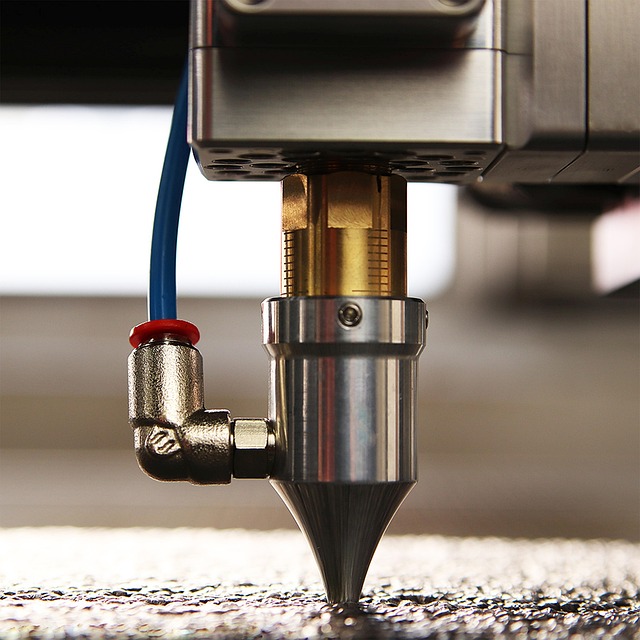Laser cutting has revolutionized the automotive industry by enabling precise, efficient production of components. As consumer demands for sustainability and efficiency rise, new innovations in laser cutting continue to emerge. This blog explores these advancements and their impact on the future of automotive manufacturing.
Why Laser Cutting is Essential in Automotive Manufacturing
Laser cutting is a non-contact manufacturing process that uses high-powered lasers to cut, shape, or engrave various materials. It has become a staple in the automotive sector for its:
- Precision: Achieving micron-level accuracy, laser cutting ensures that every component fits perfectly within an assembly.
- Versatility: Whether it’s cutting thick steel frames or intricate plastic trim pieces, laser technology offers unparalleled adaptability.
- Efficiency: Automation-friendly, laser cutting reduces production times while minimizing waste.
Automakers rely on laser cutting for several applications, including body panels, exhaust components, airbags, and even decorative interior elements. But as the industry evolves, so do the demands placed on laser technology.
What’s New in Automotive Laser Cutting?
The laser cutting field is rapidly evolving, with several new advancements making waves in the automotive industry. Below are some of the most exciting innovations:
1. Fiber Lasers Over CO2 Lasers
For years, CO2 lasers were the go-to option for industrial cutting. However, fiber lasers are now capturing attention thanks to their efficiency and versatility.
- Energy Efficiency: Fiber lasers consume significantly less energy compared to CO2 options, reducing operational costs and the environmental footprint.
- Versatility: They handle reflective materials like aluminum with ease, something CO2 lasers traditionally struggled with.
- Smaller Designs: With compact footprints, fiber lasers fit seamlessly into modern manufacturing setups.
Automakers and metal fabrication companies, like those in Salt Lake City, using fiber lasers report faster cutting speeds and lower maintenance costs, both vital in fast-paced production lines.
- 3D Laser Cutting for Complex Designs
Though 2D laser cutting remains widely used, 3D laser cutting is paving the way for handling complex geometries found in today’s cars.
- Greater Flexibility: This innovation enables cutting at multiple angles, making it ideal for creating contoured parts like exhaust pipes and lightweight structural components.
- Reduced Tooling Costs: Unlike traditional methods requiring custom molds, 3D laser cutting minimizes setup costs, offering an agile production environment.
- Higher Adaptability: Prototypes and revisions can be incorporated with ease, making it invaluable for automakers experimenting with cutting-edge car designs.
3. AI-Powered Precision
Artificial intelligence is revolutionizing laser cutting by enhancing accuracy, speed, and adaptability.
- Real-Time Adjustments: AI algorithms can monitor cutting performance and make micro-adjustments for consistent quality.
- Fault Detection: Machines equipped with AI can detect material inconsistencies and avoid cutting errors.
- Production Forecasting: AI can optimize production schedules by analyzing cutting patterns and minimizing idle time, ensuring deadlines are met.
4. Green Laser Technology for New Materials
With the rise in electric vehicles (EVs), green laser technology is becoming invaluable for cutting non-metallic parts, such as ceramic and composite materials often used in battery production.
- Thermal Stability: Green lasers operate at lower wavelengths, reducing heat-related distortions during material processing.
- Improved Efficiency: Ideal for EV batteries, green lasers ensure clean and precise cuts without affecting the material’s integrity.
5. Ultra-Fast Laser Systems
Speed continues to be a crucial factor, particularly as just-in-time (JIT) production models dominate automotive manufacturing. New ultra-fast laser systems now deliver unprecedented cutting speeds without compromising on accuracy.
- Reduced Cycle Times: Parts that previously took minutes to cut can now be done in seconds.
- Consistent Quality: Faster speeds don’t mean sacrificing precision, allowing manufacturers to rapidly scale production without errors.
What’s Next for Laser Cutting in Automotive?
While the current advancements are impressive, the future looks even more promising. Here’s what we can expect in the coming years:
1. Quantum Lasers for Unparalleled Precision
Quantum lasers may soon emerge as the next frontier in laser cutting. Using smaller photon wavelengths, they could achieve precision far beyond what current systems allow, opening the door for even finer manufacturing tolerances.
2. Fully Autonomous Cutting Systems
With advancements in robotics and AI, fully autonomous laser cutting systems will become the norm. Imagine machines that independently manage material feeds, adjust settings in real-time, and even repair themselves.
3. Enhanced Sustainability Features
The automotive industry is increasingly under pressure to reduce its environmental impact. Future laser systems will likely include built-in energy recovery systems, further cutting down on carbon emissions and waste.
4. Greater Integration with IoT (Internet of Things)
IoT-enabled devices already play a vital role in smart factories, but their application in laser cutting is expected to deepen. Connected laser systems could provide real-time analytics, enabling predictive maintenance and remote monitoring.
5. Customization Through Augmented Reality (AR)
Augmented reality will allow engineers and operators to set laser paths and review part designs in a virtual environment before cutting begins, reducing errors and waste further.
Conclusion
Laser cutting will remain essential in automotive manufacturing, driving efficiency, precision, and sustainability. As automakers push for improvement, laser technology will continue to evolve to support high-quality vehicle production.


